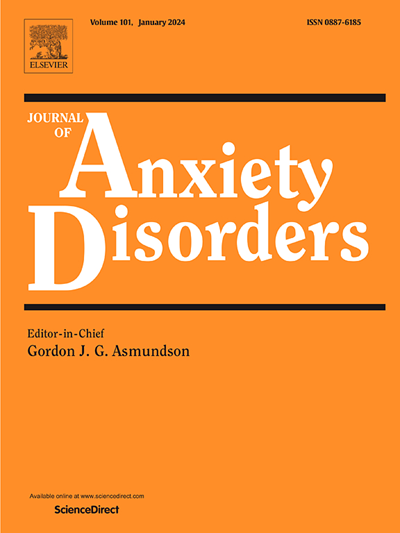Epidemiology of DSM-5 PTSD and ICD-11 PTSD and complex PTSD in the Netherlands
IF 4.8
2区 医学
Q1 PSYCHIATRY
引用次数: 0
Abstract
Introduction
Information regarding the prevalence of potentially traumatic events (PTEs), DSM-5 posttraumatic stress disorder (PTSD) and ICD-11 complex PTSD (CPTSD) in the Netherlands is currently lacking, as is data on treatment uptake and treatment barriers. We aimed to provide prevalence estimates for potentially traumatic events, PTSD and CPTSD in the Netherlands, describe treatment seeking behavior and explore associated risk factors.
Method
We included a sample of 1690 participants aged 16 years and older across the Netherlands via the Longitudinal Internet studies for the Social Sciences panel, a true probability sample of households drawn from the population register by Statistics Netherlands. We recruited participants between September 1st, 2023, and November 1st 2023. All participants completed online self-report questionnaires, and a subset consented to an interview (n = 204). Instruments included the Clinician-Administered PTSD Scale for DSM-5 (CAPS-5), the PTSD Checklist for DSM-5 (PCL-5) and the International Trauma Questionnaire (ITQ).
Results
The lifetime prevalence of any PTE was 81.5 %. The estimated lifetime prevalence of DSM-5 PTSD was 11.1 % and current prevalence 1.3 %. The estimated current prevalence of ICD-11 PTSD was 1.0 % and ICD-11 complex PTSD was 1.6 %. Especially females, younger adults, those with a lower education and those with a non-Dutch cultural background were at risk for PTSD. About half of the people with probable lifetime PTSD sought professional help and one-third received first-line PTSD treatment. Common reasons for refraining from seeking professional support included a lack of knowledge, shame and avoidance.
Conclusions
PTEs, PTSD and CPTSD are common in the Netherlands and disproportionately distributed in society. Although evidence-based treatments for PTSD are available, only about one-third of those with lifetime PTSD receive first-line treatment. Findings underscore the need for targeted screening and preventative interventions, alongside public health campaigns aimed at enhancing knowledge and mitigating stigma about PTSD.
荷兰 DSM-5 创伤后应激障碍和 ICD-11 创伤后应激障碍以及复杂创伤后应激障碍的流行病学。
目前,荷兰缺乏潜在创伤性事件(pte)、DSM-5创伤后应激障碍(PTSD)和ICD-11复杂创伤后应激障碍(CPTSD)患病率的信息,以及治疗接受和治疗障碍的数据。我们的目的是提供荷兰潜在创伤性事件、PTSD和CPTSD的患病率估计,描述寻求治疗的行为并探索相关的危险因素。方法:我们通过社会科学小组的纵向互联网研究纳入了1690名年龄在16岁及以上的荷兰参与者的样本,这是荷兰统计局从人口登记册中抽取的家庭真实概率样本。我们在2023年9月1日至2023年11月1日期间招募了参与者。所有参与者都完成了在线自我报告问卷,一部分参与者同意接受访谈(n = 204)。工具包括DSM-5临床创伤后应激障碍量表(CAPS-5)、DSM-5 PTSD检查表(PCL-5)和国际创伤问卷(ITQ)。结果:任何PTE的终生患病率为81.5% %。DSM-5 PTSD的估计终生患病率为11.1 %,当前患病率为1.3 %。目前估计ICD-11 PTSD患病率为1.0 %,ICD-11复合PTSD患病率为1.6 %。尤其是女性、年轻人、受教育程度较低的人和非荷兰文化背景的人有患创伤后应激障碍的风险。大约一半可能患有终生PTSD的人寻求专业帮助,三分之一的人接受了一线PTSD治疗。不愿寻求专业支持的常见原因包括缺乏知识、羞耻和逃避。结论:pte、PTSD和CPTSD在荷兰很常见,在社会中分布不成比例。尽管有针对创伤后应激障碍的循证治疗方法,但只有大约三分之一的终生创伤后应激障碍患者接受一线治疗。研究结果强调了有针对性的筛查和预防性干预的必要性,以及旨在提高对PTSD的认识和减轻耻辱感的公共卫生运动的必要性。
本文章由计算机程序翻译,如有差异,请以英文原文为准。
求助全文
约1分钟内获得全文
求助全文
来源期刊

Journal of Anxiety Disorders
Multiple-
CiteScore
16.60
自引率
2.90%
发文量
95
期刊介绍:
The Journal of Anxiety Disorders is an interdisciplinary journal that publishes research papers on all aspects of anxiety disorders for individuals of all age groups, including children, adolescents, adults, and the elderly. Manuscripts that focus on disorders previously classified as anxiety disorders such as obsessive-compulsive disorder and posttraumatic stress disorder, as well as the new category of illness anxiety disorder, are also within the scope of the journal. The research areas of focus include traditional, behavioral, cognitive, and biological assessment; diagnosis and classification; psychosocial and psychopharmacological treatment; genetics; epidemiology; and prevention. The journal welcomes theoretical and review articles that significantly contribute to current knowledge in the field. It is abstracted and indexed in various databases such as Elsevier, BIOBASE, PubMed/Medline, PsycINFO, BIOSIS Citation Index, BRS Data, Current Contents - Social & Behavioral Sciences, Pascal Francis, Scopus, and Google Scholar.
 求助内容:
求助内容: 应助结果提醒方式:
应助结果提醒方式:


